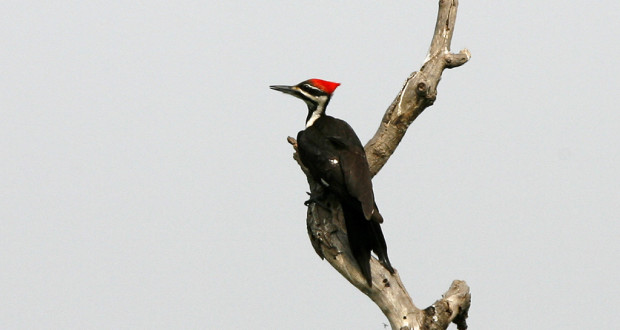• Length: 16.5 inches
• Wingspan: 29 inches
• Season: Year-round
More about Pileated Woodpeckers.
Where they are, and when.
Pileated Woodpeckers frequent mature deciduous and piney woodlands and cypress swamps. Because of broad similarities to the Ivory-billed Woodpecker, the Pileated Woodpecker has dogged efforts to determine whether that species, once thought extinct, may still exist in the wild.
Pileated Woodpeckers forage for their favorite meal of carpenter ants by digging large, rectangular holes in dead trees and fallen logs. They are well equipped for the job, with a long chisel of a bill that is about the size of its head. In addition to ants, they consume wood-boring beetles, termites, grasshoppers and other insects and a variety of wild fruits and nuts.
They are monogamous birds with large territories of up to 150 acres or more, and it’s rare to see more than a pair of them together. For their nest, Pilated Woodpeckers excavate a large cavity in a dead tree, with an oblong entrance hole. In some areas, they have to compete with other birds and woodpeckers for the available real estate, and other birds often take over their nests when they’re done with them.
